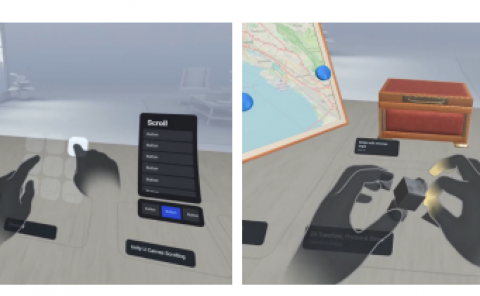A micromirror array with annular partitioning for high-speed random-access axial focusing
PubDate: Jun 2020
Teams: University of California;University of North Carolina at Chapel Hill;Chan Zuckerberg Biohub;National Institute of Standards and Technology
Writers: Nathan Tessema Ersumo, Cem Yalcin, Nick Antipa, Nicolas Pegard, Laura Waller, Daniel Lopez, Rikky Muller
PDF: A micromirror array with annular partitioning for high-speed random-access axial focusing

Abstract
Dynamic axial focusing functionality has recently seen widespread incorporation in microscopy, augmented/virtual reality (AR/VR), adaptive optics, and material processing. Yet the limitations of existing varifocal tools continue to beset the performance capabilities and operating overhead of the optical systems that mobilize such functionality. The varifocal tools that are the least burdensome to drive (ex: liquid crystal, elastomeric or optofluidic lenses) suffer from low (~100 Hz) refresh rates. Conversely, the fastest devices sacrifice either critical capabilities such as dwelling capacity (ex: acoustic gradient lenses or monolithic micromechanical mirrors) or low operating overhead (ex: deformable mirror arrays). Here, we present a general-purpose random-access axial focusing device that bridges these previously conflicting features of high speed, dwelling capacity and lightweight drive by employing low-rigidity micromirrors that exploit the robustness of defocusing phase profiles. Geometrically, the device consists of an 8.2 mm diameter array of piston-motion, 48 um-pitch micromirror pixels that provide 2pi phase shifting for wavelengths shorter than 1 100 nm with 10-90% settling in 64.8 us (i.e. 15.44 kHz refresh rate). The pixels are electrically partitioned into 32 rings for a driving scheme that enables phase-wrapped operation with circular symmetry and requires less than 30 V/channel. Optical experiments demonstrated the array’s wide focusing range with a measured ability to target 29 distinct, resolvable depth planes. Overall, the features of the proposed array offer the potential for compact, straightforward methods of tackling bottlenecked applications including high-throughput single-cell targeting in neurobiology and the delivery of dense 3D visual information in AR/VR.


